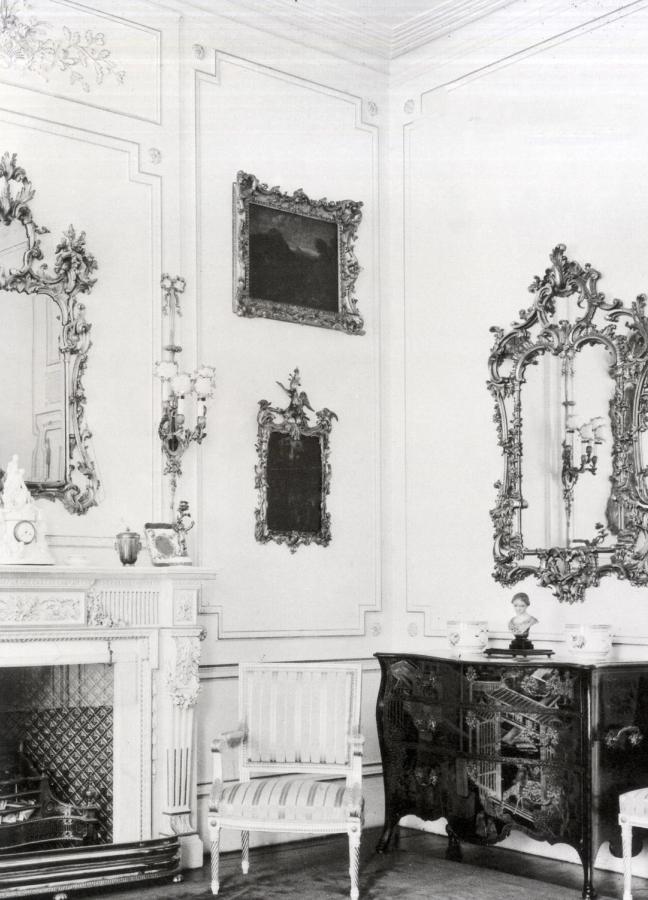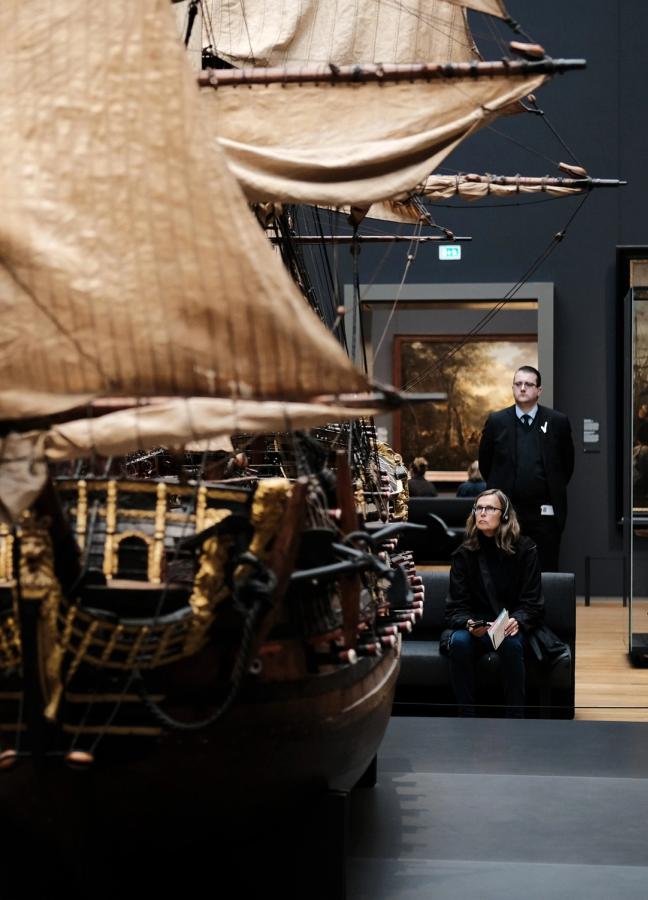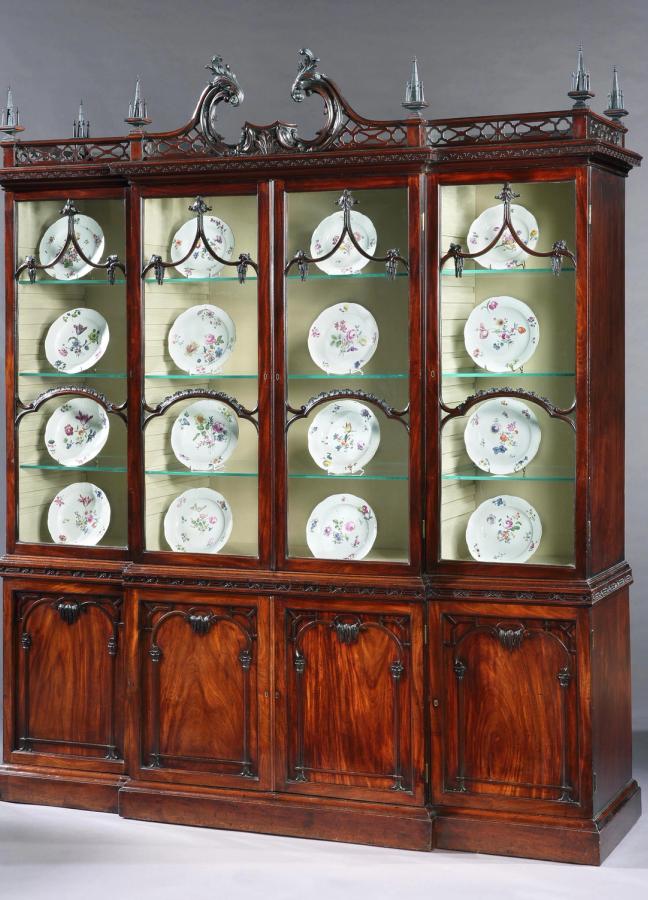How to start collecting antiques, with Ronald Phillips
We turn to Simon Phillips, second-generation manager of the established Mayfair antiques store, for his advice on collecting
The trinkets, objects and decorations that adorn your house may be pleasant and pretty to look at, but their worth is increased exponentially if they sit where they do for a reason. Each of these articles, perched on windowsills, mantelpieces and side tables, should tell a story — and nothing tells tales like an antique.
Plucked from the centuries past, antiques have the uncanny ability to transform your house into a museum, albeit one where the artefacts have been chosen specifically for you. But, to curate this most excellent of exhibitions, you must first know where to look for such particular pieces of history, how to determine their worth, and why they deserve a spot in your home.
"Each of these articles, perched on windowsills, mantelpieces and side tables, should tell a story..."
Ronald Phillips, the eponymous antiques company founded in 1952, first took hold of London in a period when wartime austerity was coming to an end. Demand for antiques — and advice on how to buy them — has grown steadily since. Today, more people are obsessing over history and artefacts than ever, so what simple steps can ensure you find the best antiques money can buy?
We turn to Simon Phillips, the second-generation manager of the established Mayfair antiques store, for his key advice on starting your own antiques collection.
1. Always go to a reputable dealer

Simon Phillips
You know the feeling when you go to a cheap-and-easy plumber or builder? When they knock up a wall or fit a bath and you just know that you’re going to have to pay to have the same job done in less than a year? Well, that feeling — of regret and unease — is not one you want when it comes to antiques. This is big money, so you need your dealer to shoulder a big responsibility.
“It is important to always go to a reputable dealer,” reiterates Simon Phillips. “Sadly, there are less and less dealers around these days — a lot of the great names like Hotspur, Jeremy, Mallett and Partridge have all closed down for various different reasons.
“But reputation is paramount, as you are putting trust in this person or firm. You want to be able to learn from the dealer and take their advice to form a collection. Another benefit of going to a reputable dealer is that they will be well-equipped to change your approach and upgrade once your disposable income increases or if your tastes change.”
2. Buy less, but buy better

The St. Giles House commodes (in situ)
Walking into an antique shop, especially for the first time, can be overwhelming. Like a child in a sweet shop, you’ll be tempted from all angles to buy up trinkets and objet d’art to begin your collection. Phillips, however, suggests that you don’t do this — and instead take a step back.
“My next piece of advice I think is vital — try to buy less and buy better. The better things will be more enjoyable and, in the long run, give you better value for money. The much better items are not only much more enjoyable to have in your house or office but, also, when the time comes to sell them or pass them down the family, these are the items you want in your possession.
“Another point,” the dealer adds, “obviously concerns provenance. You want either an invoice or more likely a photograph of the article in situ, which will add to the piece tremendously. Illustrations in books also help, especially something like “The Dictionary of English Furniture”, which would make it all the more desirable and valuable.”
3. Establish a relationship with a dealer

Taste is an interesting concept. Of course, there will be certain antiques that catch your eye and kick off a passion for a certain period or style. But, other times will see items appeal to you from out of left field. And, the only way you’re going to ensure that every piece suggested to you is a hit is to make your personality known to your dealer.
“Once you have established a ‘relationship, try to work together,” suggest Phillips. “My next piece of advice is to always go for the best quality possible. Even try to push yourself, and buy what you can’t afford or don’t want to afford.
“The price will be forgotten about once the enjoyment and satisfaction you’ll feel for years to come kicks in. But, if you cannot find a local friendly dealer to build up a relationship with — you really should, though, as they can buy for you at auctions you can’t make — then look to visiting the major vetted fairs.
“In London, this is either the BADA Fair or, more importantly, the Masterpiece Fair at the end of June. All items are strictly vetted which helps people who can’t find the dealer they want to work with. It is important to note that a lot of dealers keep their best items for these fairs and the prices are exactly the same as they would be in their shops.”
4. Learn what you’re looking for

To help you buy less but buy better, you should learn what you’re looking for. If you go into shops with a clean cut idea of what you want, you’ll be less likely to stray from the path of purchase and grab half a dozen items you don’t actually need. A key part of this is separating the wheat from the chaff, and identifying which pieces are worthy of your investment.
“When buying a piece,” advises Phillips, “always go for quality, design, colour and patination — the skin on a piece of furniture. Figuring out this authenticity is where the reputable dealer steps in. Also, try not to buy a piece of furniture that has a repolished surface.
“It is helpful to read a few books on the subject,” he adds. “We at Ronald Phillips Ltd produce a yearly catalogue which represents a very good selection of the best items on the market. When a beginner starts to collect, however, it pays to look at books like The Norman Adams collection or Hotspur’s 80 Years to see what colour is all about. Perhaps take a trip around a museum — although most of these items are not for sale, it will give you a good idea of the different periods of design and is a great way of learning.”
5. Find a favourite time period

An important George II Mahogany China cabinet designed by Thomas Chippendale
We all remember from school history lessons what periods we enjoyed learning about, what we engaged with more and what areas of the past we’d gladly skip over and never consider again. It’s much the same with antiques. Visually, many of these pieces simply won’t grab you, and if you don’t like it, don’t buy it.
Anything from pattern to material can sway you on an item, and although your initial attraction may chiefly be visual, take the time to listen to the stories of how certain period’s items were created — becase, as we mentioned, the best decor tells a story.
“Of course, you have to decide what woods and periods you like,” says Phillips. “This might be dependent of the date of your house if you’re looking to fill it. Furniture collecting, especially, is subject to fashion — a few years ago, Queen Anne walnut was very fashionable, but now it is all about Chippendale — which is hardly surprising as it the tercentenary of Thomas Chippendale’s birth this year. So the trends are there to follow if you like, but the decision — ultimately — comes down to you.”
Want somewhere equally grand to house your antiques? This is a genuine castle, up for sale…

Become a Gentleman’s Journal Member?
Like the Gentleman’s Journal? Why not join the Clubhouse, a special kind of private club where members receive offers and experiences from hand-picked, premium brands. You will also receive invites to exclusive events, the quarterly print magazine delivered directly to your door and your own membership card.


